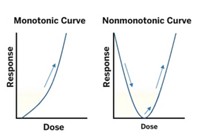Advertisement
Grab your lab coat. Let's get started
Welcome!
Welcome!
Create an account below to get 6 C&EN articles per month, receive newsletters and more - all free.
It seems this is your first time logging in online. Please enter the following information to continue.
As an ACS member you automatically get access to this site. All we need is few more details to create your reading experience.
Not you? Sign in with a different account.
Not you? Sign in with a different account.
ERROR 1
ERROR 1
ERROR 2
ERROR 2
ERROR 2
ERROR 2
ERROR 2
Password and Confirm password must match.
If you have an ACS member number, please enter it here so we can link this account to your membership. (optional)
ERROR 2
ACS values your privacy. By submitting your information, you are gaining access to C&EN and subscribing to our weekly newsletter. We use the information you provide to make your reading experience better, and we will never sell your data to third party members.
Environment
European Union Reaffirms Safety Of Bisphenol A
by Britt E. Erickson
January 26, 2015
| A version of this story appeared in
Volume 93, Issue 4
The controversial plastics chemical bisphenol A (BPA) poses no health risks to consumers of any age, including unborn children, at current levels of exposure, the European Food Safety Authority (EFSA) concludes in a comprehensive reevaluation. The agency took into account BPA exposures from diet, dust, cosmetics, and thermal paper cash register receipts, all of which were under the safe level even when combined. New data and improved analytical methods prompted EFSA to drop the safe level of BPA from 50 µg/kg of body weight per day to 4 µg/kg per day. Even so, estimates for BPA exposure from all sources combined were significantly lower than the new safe level. EFSA plans to reconsider the safe level in two or three years, when the results of a long-term study by the U.S. National Toxicology Program are available. That ongoing work aims to address many uncertainties about the toxicity of BPA, including its effects on the mammary gland and reproductive, metabolic, neurobehavioral, and immune systems. EFSA experts concluded that high doses of BPA—hundreds of times the safe level—are likely to affect the kidney, liver, and mammary glands in animals.





Join the conversation
Contact the reporter
Submit a Letter to the Editor for publication
Engage with us on Twitter